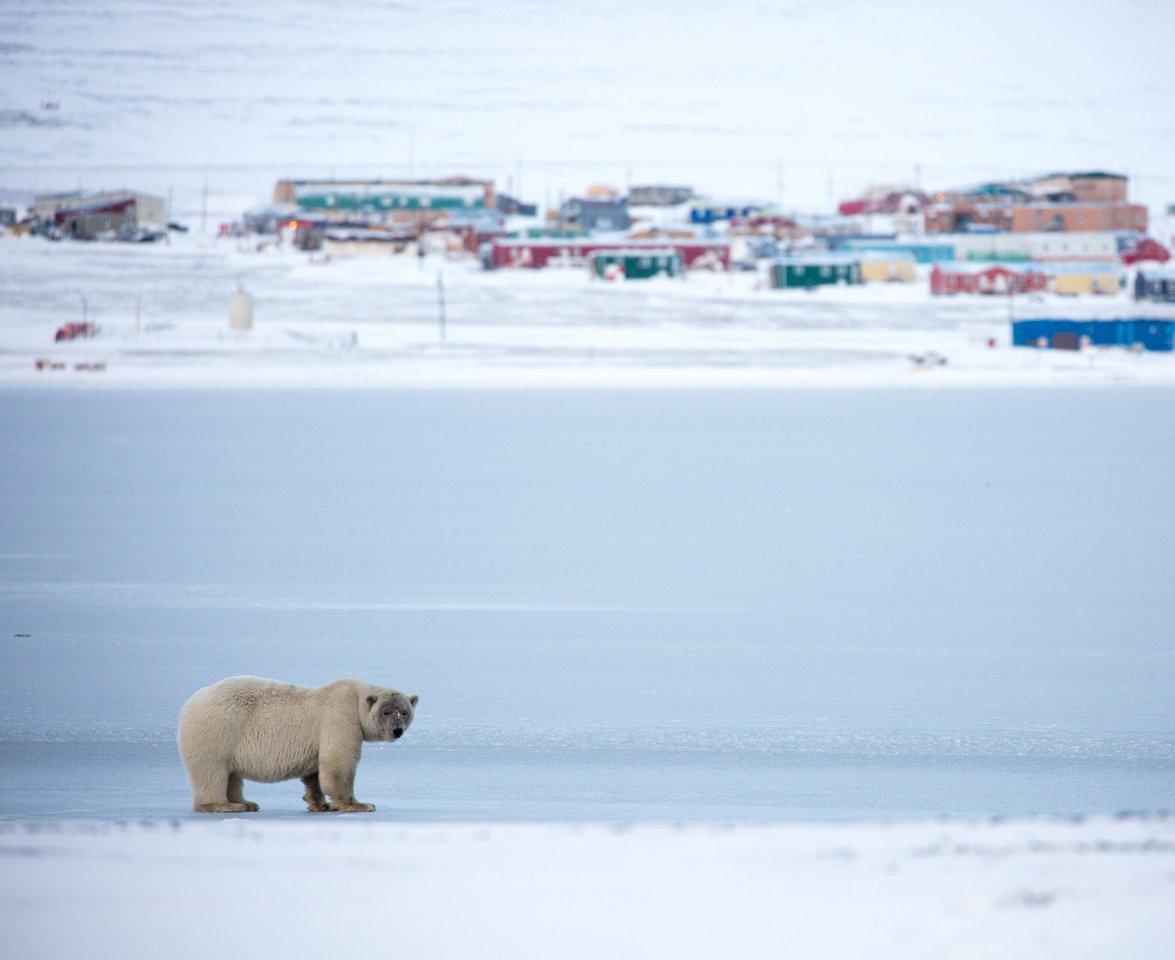The pretty little hamlet of Whale Cove is situated on a long point of the Canadian mainland that projects into northwestern Hudson Bay.
The way of life here is proudly traditional — a mixed mosaic of three distinct Inuit dialects and cultures originating from inland and coastal traditions.
The English name for this sheltered cove and its community comes from the great abundance of beluga whales that congregate here.
403
95% Inuit
Inuktitut, English
Longitude 95° 51’ W
Latitude 68° 38’ N
Elevation 40m
Rolling hills, tundra valleys, wild coastal beaches, with many crystal clean lakes and rivers.
Weather & Climate
The sea ice breaks up in June when the sun shines 20 hours a day. Snow starts to accumulate in October. With many windy days here, huge snowdrifts are common. The shortest days of December have four hours of sunshine.
| Average Temperature in Whale Cove | |||
|---|---|---|---|
| January | -31oC | February | -31oC |
| March | -27oC | April | -16oC |
| May | -6oC | June | 3oC |
| July | 9oC | August | 8oC |
| September | 2oC | October | -4oC |
| November | -16oC | December | -26oC |
HISTORY
The indigenous forerunners of the Inuit, the Pre-Dorset people, were living in this part of Nunavut long before biblical David became king of the ancient Israelites.
At Iqalugaarjuup Nunanga Territorial Park, located 80 kilometres (50 miles) from Whale Cove, there are numerous Pre-Dorset archaeological sites dating from 1000 BC to 500 BC, plus Thule sites dated to 1200 AD.
- Pre-Dorset Culture (‘Saqqaq’): 2500 BC to 500 BC
- Dorset Culture (‘Tuniit’ or ‘Sivullirmiut’): 500 BC to 1500 AD
- Thule Culture (Proto-Inuit): 1000 AD to 1600 AD
- Inuit Culture (Eskimo): 1600 AD to present-day
The Thule people were bowhead whale hunters. The inland and coastal Inuit peoples of Whale Cove are caribou, hare, fox, wolf, geese, ptarmigan, seal, walrus, polar bear, bowhead and beluga whale hunters, plus expert fishers of char, turbot, cod and trout.
In 1613 the British explorer Thomas Button visited the Whale Cove area while searching for the Northwest Passage and the lost Hudson expedition of 1611. A generation later, continuing the same search in 1631, the British explorer Luke Foxe sailed the entire western coastline of Hudson Bay before concluding no passage to China was possible here.
The Hudson Bay Company (HBC), incorporated by English royal charter in 1670, arrived into the Whale Cove area during the 1700s to trade rifles, ammunition, tea and sugar for valuable furs harvested by the local Inuit men.
The permanent settlement of Whale Cove was created during the Keewatin Famine in the winter of 1957-1958 when many Inuit faced starvation as the caribou disappeared.
The Government of Canada relocated disparate survivors of the famine to Whale Cove where it was believed that wildlife resources would allow these peoples to live by their traditions of hunting, fishing and trapping. The settlement was formed with three distinctly different groups of Inuit people, with different dialects, kinships and cultural histories.
- Hauniqturmiut — coastal; from Arviat to the Whale Cove area
- Paallirmiut — inland; from the Baker Lake to Arviat area
- Qaernermiut — coastal; Chesterfield Inlet to Whale Cove area
Like many Nunavut communities today, Whale Cove relies heavily on subsistence hunting and fishing.
Seal, walrus and beluga meats are the main foods provided by the men, as well as lake trout and arctic char, augmented by seasonal caribou and polar bear hunting. Added to this traditional diet of arctic fishes and mammals, the women harvest highly nutritious wild berries in the summertime.
ACTIVITIES AND WILDLIFE
The fishing here is excellent. Each spring there is an annual fishing derby for the biggest lake trout.
There are lots of seals and walrus, arctic char and lake trout, arctic hares and polar bears. Participating on expeditions with the local people you can travel inland on dog sleds, snowmobiles or ATVs to camp out while hunting caribou, fishing the rivers and lakes, berry picking and gathering goose eggs.
In the summer, Whale Cove stages traditional Inuit games and holds contests such as tea and bannock making, inuksuk building and rabbit hunting.
ARTS AND CULTURE
Whale Cove est une collectivité traditionnelle riche des différences subtiles entre les trois groupes inuits qui la composent. Pour en apprendre davantage au sujet des arts et de la culture de l’endroit, communiquez avec le bureau du hameau et, lorsque vous passerez dans le coin, assurez-vous de visiter la coopérative Issatik.
Parks
Iqalugaarjuup Nunanga Territorial Park
This historic park is located 80 kilometres (50 miles) from Whale Cove. It was created to preserve several important archaeological sites and to conserve the habitat of loons, ducks, geese, cranes, voles, lemmings, hares, foxes, wolves, caribou, barren land grizzly and polar bears.
It remains a camping and fishing paradise from ancient times.
The Medialine River cliff area is called ‘Ijiraliq’ in Inuktitut, from Inuit legend, referring to the name of someone who turns into a whistling spirit, like a caribou.
The archaeological section of the park has numerous artifacts of the Pre-Dorset people dating from 1000 BC, plus tent rings, graves and food cache sites of the Thule people dated to 1200 AD.

